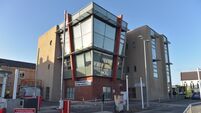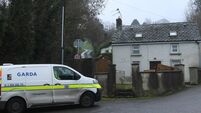'No evidence' of defect on BA crash-landing jet
Investigators today found no evidence of a mechanical defect as the cause of the British Airways Boeing 777 crash-landing at Heathrow airport last month.
They also found the “black box” flight recorders indicated “no anomalies in the major aircraft systems”, and ruled out ice, water or contamination of fuel tanks, a report from the Air Accidents Investigation Branch (AAIB) said.
But there was some damage seen to the engine high pressure fuel pumps and some small items of debris were found in the fuel tanks.
Not giving any cause of the January 17 accident, the AAIB said it was carrying out a full examination and analysis of the entire aircraft and engine fuel system.
The Boeing 777, with 136 passengers and 16 crew aboard, had flown to London from Beijing on January 17.
With the cockpit crew unable to get the required thrust from the engines as the plane approached Heathrow, the aircraft came down on the grass “some 1,000ft short of the paved runway surface and just inside the airfield boundary fence”, the report today said.
As the plane skidded across the grass and on to the end of the runway, the underpart of the aircraft collapsed. All occupants were safely evacuated, with one passenger suffering a broken leg and eight others receiving minor injuries. Four crew were slightly hurt.
Co-pilot John Coward, 41, took control for the landing and at a height of about 720ft the thrust of the right engine reduced, the report said.
About seven seconds later, the thrust reduced on the left engine to a similar level.
The engines continued running but not with the amount of thrust demanded. By 200ft the airspeed had reduced to about 108 knots and the autopilot disconnected at 175ft.
A “significant amount of fuel leaked from the aircraft after it came to rest, but there was no fire”, the report said.
The plane had flown over the Ural mountains in Russia but the Met Office described the temperature conditions during the flight as “unusually low compared to the average, but not exceptional”.
The minimum recorded fuel temperature was minus 34C and fuel samples taken after the accident showed the fuel on board had an actual freezing point of minus 57C.
The report said: “The autopilot and the autothrottle systems behaved correctly and the engine control systems were providing the correct commands prior to, during and after the reduction in thrust.”
The report went on: “Examination of the engines indicated no evidence of a mechanical defect or ingestion of birds or ice.”
Samples were taken from the fuel tanks and initial results showed that there were “no signs of contamination or unusual levels of water content”.
As far as the high pressure pumps were concerned, the report today said: “Detailed examination of both the left and right engine high pressure fuel pumps revealed signs of abnormal cavitation (air bubbles) on the pressure-side bearings and the outlet ports.
“This could be indicative of either a restriction in the fuel supply to the pumps or excessive aeration of the fuel. The manufacturer (Boeing) assessed both pumps as still being capable of delivering full fuel flow.”
The report went on: “Investigations are now under way in an attempt to replicate the damage seen to the engine high pressure fuel pumps and to match this to the data recorded on the accident flight.”
The AAIB did make one safety recommendation today. This concerned the order in which the cockpit crew went through the evacuation checklist procedures.
Boeing raised no technical objection to BA introducing a save-time checklist sequence, but the report said this led to the loss of fuel from the aircraft.
The AAIB added: “This was not causal to the accident but could have had serious consequences in the event of a fire during the evacuation.”
The AAIB recommended that Boeing tell 777 operators to do the evacuation checklist in the right order. Boeing had accepted this.
Kieran Daly, editor of internet news service Air Transport Intelligence, said: “The AAIB have effectively ruled out virtually all the potential causes of the accident.
“They are now following two lines of inquiry. There were signs that not enough fuel was reaching the pumps that finally pump the fuel into the engines and they are looking at the debris in the fuel tanks.”
He went on: “It is quite likely that some time will now pass before there is another bulletin on this accident.”













